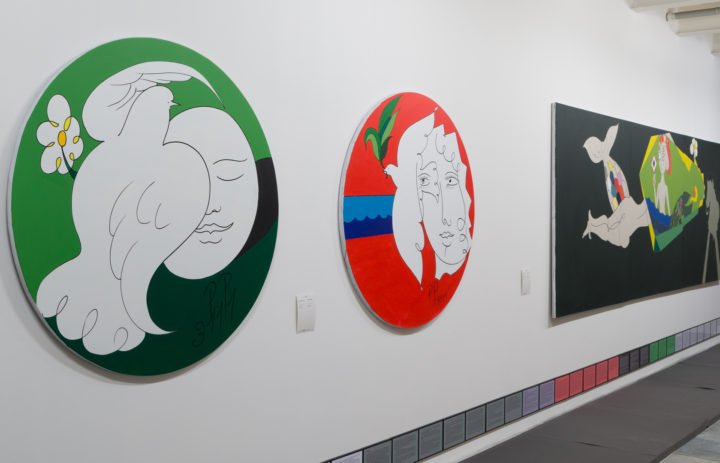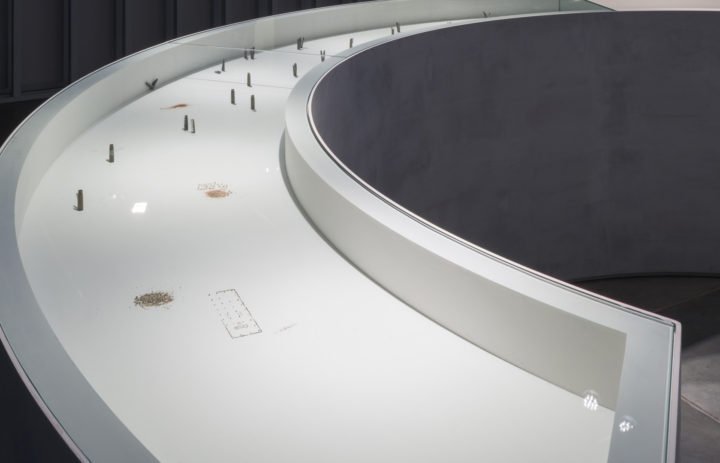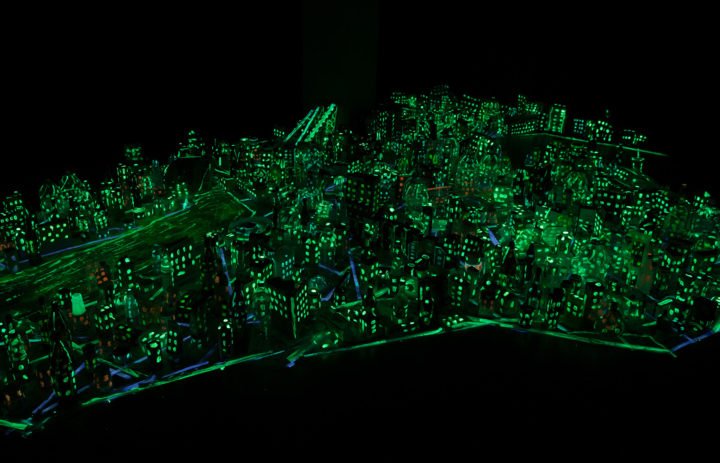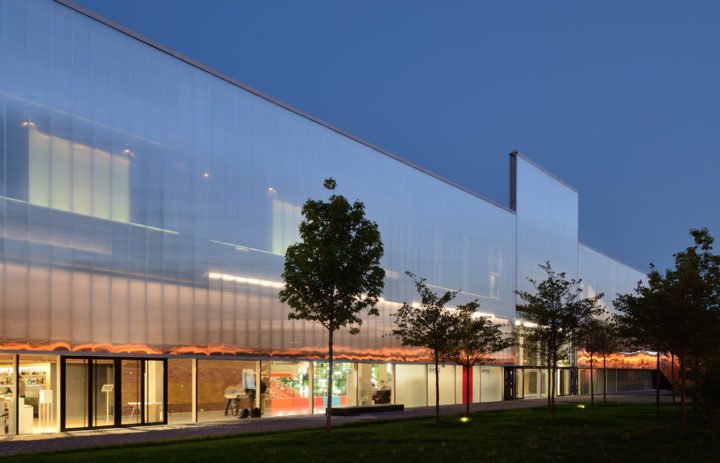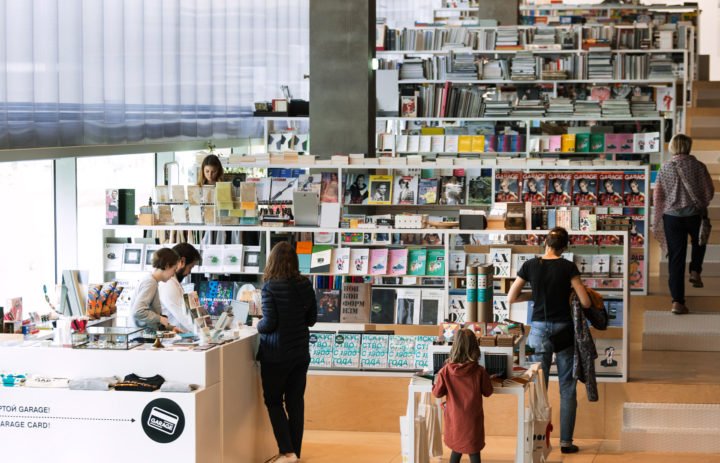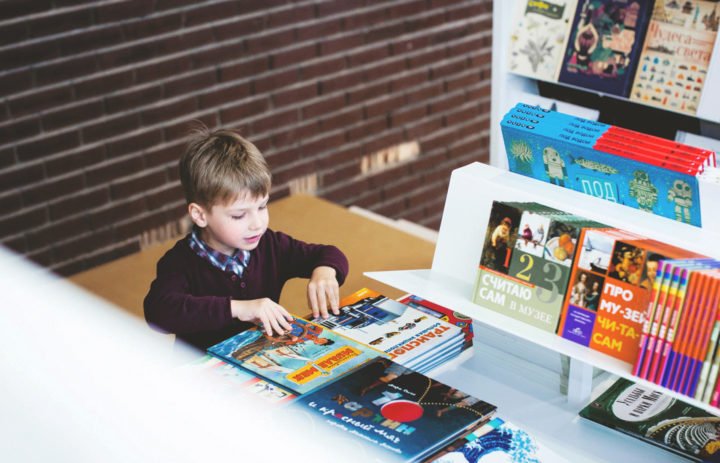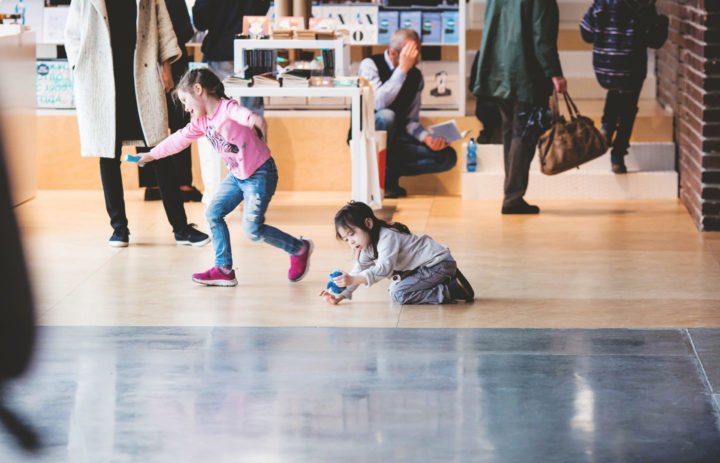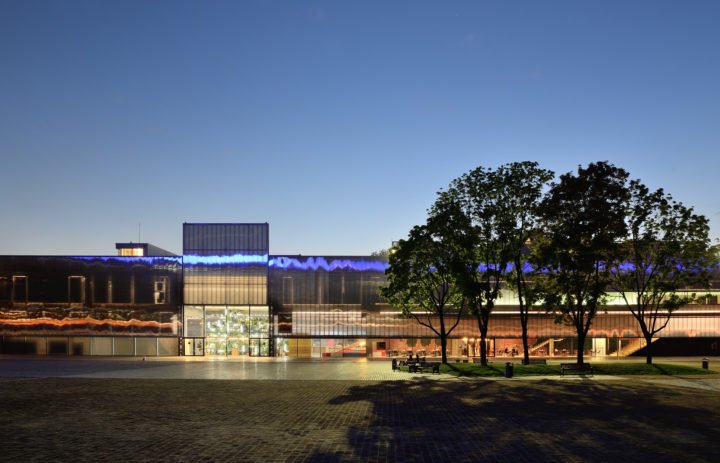Close your eyes and picture your garage. Bikes with long-deflated tires. Precarious towers of boxes containing old clothes, abandoned toys and high school yearbooks. It’s unlikely that you’ll stumble upon any stunning and provocative pieces of modern art in your garage. (And no, the painting that you made in 2nd grade that Mom hung up on the fridge doesn’t count.) But Garage – or the Garage Museum of Contemporary Art – in Moscow, Russia is a different story. Started in 2008 by Dasha Zhukova, the Garage has become one of the hottest modern art venues in the world and is home to the first archive in the country to focus on the history of Russian contemporary from the 1950s onward.
Garage (G): The Garage Museum of Contemporary Art was conceived as a center where exhibitions would happen several times a year, and began in 2008 with a huge retrospective of Ilya and Emilia Kabakov – their first exhibition in Russia since their emigration to the U.S.
G: The institution borrowed its name from the building where it was originally housed, Bahmetevsky Bus Garage, a masterpiece of constructivist architecture built by two renowned Russian architects. The first, Konstantion Melnikov, laid the foundation for the international phenomenon of Russian constructivism. The second, Vladimir Shukhov, constructed the engineering plan of the building. He was also a well-known Russian inventor who created the first man-made petro pipe system, among many other things.
G: The Museum offers an extensive list of exhibitions, events, education, research, and publishing that reflects current developments in Russian and international culture. Through these programs, we aim to provide opportunities for dialogue, as well as production of new work and ideas. Central to these activities is the Museum’s collection, which is the only public archive in the country related to the development of Russian contemporary art from the 1950s through to the present.
G: The most challenging part of the program is archival as it is concerned with material that is difficult but at the same time highly interesting to expose and work with. Every year, we publish at least one book focused on local art history for which we use our archive as a general source. Sometimes we invite artists to work with the archive, to use it for inspiration as for instance has happened with Towards the Source show.
G: I need to mention the Garage Field Research program here. Each Field Research project is generated by the interests of artists, curators, and writers working around the world, and re-evaluates Russian-oriented issues in a global context. The projects prioritize central themes in Garage Programs, which have previously included the Russian avant-garde, historical periods relevant to understanding conditions today such as the 1960s and the 1990s; concepts such as “The New International” and the post-Post Soviet condition.
Each research project lasts between one to three years and has no predetermined outcome. There are regular public presentations charting the progress of each initiative from the point of view of the participating artists and curators, as well as seminars with specialists that provide a broader context for each initiative. Our hope is that this body of accumulated research will contribute to the development of new artwork, film, exhibitions, databases, lectures, or publications, for example.
G: At the moment, Garage doesn’t have a collection but in 2012, we launched a grant program for emerging artists. This program is still the only one of its kind in the country. And in 2016, as part of its collaboration with SDV Arts & Science Foundation, Garage expanded its grant program to include an Art and Technology section, which supports emerging artists and groups working with information and engineering technologies in the field of science art.
G: We have a public program curator in Garage who is dedicated full-time to the education initiative. The education department consists of fifteen people who work with the curator in a very close collaboration to develop the program jointly.
G: The exhibition I’m most looking forward to is the Takashi Murakami show which opens in September 2017. The exhibition comprises different periods of Murakami’s work starting from the mid-1990s till now. At the same time, the project will demonstrate the result of the research Murakami has done into local customs and collective consciousness, which question the difference between high and low culture.
- Installation view of Garage Triennial of Russian Contemporary Art, Garage Museum of Contemporary Art, Moscow, 2017
- Photo: Yuri Palmin
- Response: Andrey Misiano
- © Garage Museum of Contemporary Art








